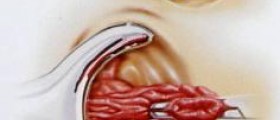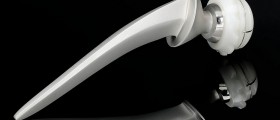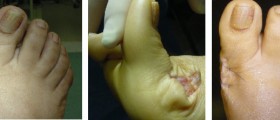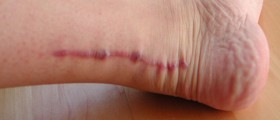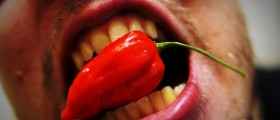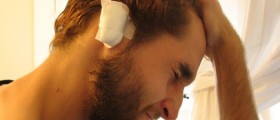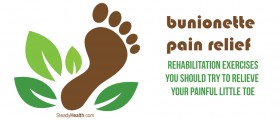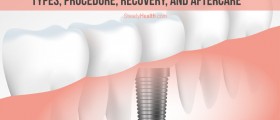I'll start by saying I am not a doctor, but I had a hemorrhoidectomy 7 days ago which removed 2 external hemorrhoids and would like to share a few things that I wish I had done.
Most important thing! Start your fiber and liquids at least 2-3 days before surgery! I can not stress this enough for the reasons below.
I started fiber 1 day before surgery and did the Fleet Saline Enema the night before and the morning of the surgery.
Surgery Day - Was offered spinal or general anesthesia. I chose spinal to avoid the breathing tube knowing that it would take longer for my lower body to "wake up" after the surgery. This bit me because after the surgery the nurse said I had to be able to walk and urinate to leave. I started pounding liquids immediately. The thing they failed to tell me was that the bladder "on/off" function is one of the last you regain. So, 3 hours after surgery, my legs were awake enough to make it to the bathroom and my bladder was beyond full. I tried everything including running my hand under warm water and having a talk with my bladder and penis about what was about to happen if they did not cooperate soon. I told them I needed a catheter (foley?) and they did an ultrasound on my bladder which showed the machines max reading, over 999 cc's. I proceeded to have the dreaded tube-up-the penis and had difficulty urinating for the rest of the day along with an itch deep in my urethra from the catheter. Pain was there but not terrible after surgery even with a small bowel movement of left-over enema and blood.
Day 1 - took one Percoset and Motrin- minor pain, but manageable. Diet consisted of high-fiber oatmeal packets, shredded wheat, soup, lots of fluid, benefiber, and high-fiber bread for the week.
Day 2 - no Percoset (avoiding the side effect of Constipation) and no bowel movement
Day 3 - All hell broke loose. I had an urge to go and was constipated. It was terrible. It literally resulted in so much pain that I was bent over the toilet using my finger to try and break up the stool. START YOUR FIBER AND LIQUIDS EARLY. I called my surgeon and she did not sound too worried because it was only day 3. I took 2 percoset + ibuprofen to try and fix the pain....Percoset did not touch the pain that I encountered on my constipated bowel movements, it was useless.
Day 4 - Still had the urge to go. Used a mineral oil enema followed by a saline to try and soften the impacted stool. Tried to go again with no success and immense pain. Went to the hospital. The on-call surgeon gave me a Digital Rectal Exam, which was terrible, followed by pumping me full of more saline. No results. I quit the percoset. It did not help anyway. They also gave me a laxative "Miralax" , a stool softener, Colase, and suppositories.
Day 5 - Slightly after midnight I had the urge to go and finally went. Again, it was not fun, but was a relief to finally have a successful movement. Pain was terrible.
Day 5-6 - Uneventful. Took Colase twice a day along with fiber/liquids/etc.
Day 6/7 - Another bowel movement and I was a little constipated at first. I did not know what else to do. I took Miralax at this point. I do not want to be dependant on laxatives, but it is very necessary for at least a week. Again, I was clutching the sink and squinting my eyes, but it makes me happy to know every BM is one closer to getting back to normal.
SO, what to take from this:
1) You should be pooping soft-serve a day before your surgery. Trust me on this one..you DO NOT want to be constipated. Lots of water, Colase, Fiber, WHATEVER IT TAKES.
2) Forget the Percoset/Vicodin. In my opinion, it is not worth it. Pain killers are know for their constipating effects. The pain in-between bowel movements was manageable for me and the actual bowel movement was so painful the pain killers did not help anyway.
3 ) I recommend not drinking liquids until you can feel your genitals after a spinal, or using general anesthetic to try and avoid the catheter. Not being able to urinate is a side effect of the surgery from swelling and happens in 20% of cases.
I hope this helps. I am one week post-op and will update this thread every week as my recovery continues.
Loading...
Loading...
Loading...
I thought I was the only one who made my bm in the sitz,it is less painful. If I do wipe,I use baby wipes with Shea butter, more comfy than Tucks or to!I had my surgery 9 days ago.I was able to poo in less then 24 hours,hurt like hell but I was glad to be able to go.I hate the spasms I got from the"mild"laxative my doctor gave me-so I been pounding down lots of water&juice,fuit,oatmeal,applesauce&soft cooked eggs.no spices,fried nothing&I eat yogurt like its going out of style.I guess I been lucky,but its definitely been painful¬hing I want to do again.also,putting feet up on stool while using toilet,to get into a squatter position helps movements pass easier.I hope this helps you.
Loading...
Hemmorhoidectomy Preparation and Recovery Tips. Experiences
How do you know you need this surgery?
For me, a lifetime of difficult bowel movements (constipation, irregular, sluggish bowel) were made worse via undiagnosed Celiac. The compromised digestive systems gluten intolerance/allergy, IBS sufferers, and other intestinally challenging folks face includes severe constipation, which leads to hemorrhoids.
A difficult hysterectomy recovery at a young age recovery really exaserbated my internal hemorrhoids, which became external. A colorectal surgeon indicated treatment for the my decade old hemorrhoids would be “painful and complicated.”
12 years later I thought, surely recovery couldn’t be worse than the worst ‘hemm incident?
(Yah, I’m smirking too. Why yes, it can.)
My doc first treated my internal hemorrhoids with IRC: painless and effective. Suddenly my BMs (bowel movements) were noticeably sizable, easier, and the constant bleeding and inflamed feeling/pain stopped. This shocked me into realizing how compromised my digestive/BM process had become, for many years, and how dangerous that can be, not to mention demoralizing. No white clothes, extra time spent cleaning up post BMs, never feeling quite hygienic, since patting versus wiping, at the least requires wipes as a constant edition to TP).
With a history of colon cancer in my family, newly having health insurance, being fed up with the difficulties of my very sizable cluster of external stage 4 hemorrhoids (stage 3 can be easily re-inserted into the anus, stage 4 cannot), encouraged by the IRC result, I met with the surgeon again, we scheduled the hemorroidectomy surgery, just before Christmas.
In addition to removing the external cluster, which spanned, unfortunately, enough space around my anus so as to require sutures that are causing difficulty at day 10 (too tight, will require cutting the ends to enlarge their ‘stretch’), my doc said she’d also remove whatever was left of the internal ‘hems we’d treated with IRC one month earlier, which turned out to be many.
The one good thing I can say about ‘hems: they are an excellent inflammatory foods barometer. Sugar, dairy, wheat, too much stress, not enough sleep: all set our ‘hems into thrombosis, bleeding, inflamed ‘hemms to pain that becomes unbearable, lives too affected. So, they must go. And we are here.
Choose a colorectal surgeon for this delicate, detailed procedure. The more experience s/he’s had, the more confidence you can have in your care.
My doc, also Board Certified, has performed hundreds of these procedures.
I have a 12 year history with her: 2 colonoscopies, an IRC treatment for internal hemorrhoids, and my recent (10 days ago) hemorrhoidectomy.
She was very direct and honest about the pain and recovery involved in this procedure, and paid attention to my concerns that pain, and anxiety about pain, not be hindrances in my recovery.
Having read an earlier post from a 17 year old who suggested we ‘suck it up’ and stop whining about the incredible pain of this procedure, because after he’d had one internal hemorrhoid removed, ‘his recovery was a breeze’, I feel compelled to share a quick anatomy lesson my doc gave me:
internal hemorrhoids: these cause the most external bleeding, and are the least painful hemorrhoids to remove, and with the most treatment options, when they’re located above the dentate, which has little to no nerve endings.
Internal ‘hems certainly can be painful when inflamed. Inflamed, they take up much of the space in that area of your colon, causing bowel movements to become painful, smaller, irregular, and finally, with enough size growth, which happens when we strain, their inflammation effects begin to affect the health and functioning of nearby organs.
With no changes in diet or the situation that caused them to grow, these can become external hemorrhoids.
Internal ‘hems below the dentate line are painful.
Posterior versus anterior locations:
there’s more nerve endings in the posterior location than anterior. This matters in understanding why some people’s recovery is more/less painful/difficult.
Stage 1, 2 and 3 hemorrhoids are mostly classified as internal, since they can be pushed back to the internal anal canal.
Office procedures like IRC can be performed on these hemorrhoid types: very effective, painless, minimal to no recovery. Popular, and, works for many people.
External hemorrhoids: with as many nerve endings as are in our finger tips, surgical removal of external hemorrhoids (all hemorrhoids below the dentate line), requires cutting away the inflamed tissues, and suturing the new ‘hole’ together.
There are less treatment choices for these external (exposed), stage 4 hemorrhoids.
Removal of both internal and external hems are common in hemorrhoidectomies.
Planning for your surgery:
Plan on a solid week off from work or your routine daily activities, at least, if not two.
Even with the best care and a fast recovery, this is a significant procedure. To have it be successful, to ensure good self care habits, to give your body (and mind), the support it needs; plan for a healthy recovery, which includes a solid chink of time in which you can rest if/when you need to. Plan to not lift anything or anyone over 20 lbs. Get your chores, errands, homework, and work you’ll need done for the week or two done. Ask a family member or friend for support as you might need it. Apologize in advance for any remarks or offenses you’ll make in the heat of recovery:)
Some folks return to normal activities at week two - but generally, that’s where we all seem to start feeling a little better, able to do a little more.
For many of us who had this procedure after many years of internal and external hemorrhoid growth, and so a more complicated surgery and recovery - that timeline is often greater.
Be gentle with yourself and this healing opportunity. Be patient with progress. Even the smallest shifts of feeling better are really indication of tremendous physical healing in a very sensitive and active area of your body. It’s more common than not to feel discouraged for small pockets of time within this process. One step forward can feel like two steps back in the early days. Remember, this too shall pass, and for your efforts, you’ll have freedom from the relentless complications and pain of hemorrhoids that have plagued you.
On the first day (for 24 hours really), its best you have someone available to help you. You’ll be groggy, you may be in pain depending on your surgical and post surgery pain coverage, the number/size/location of ‘hems removed.
Bowel movements will be your primary focus for the initial days of recovery, and anything that affects them…which includes pain. Pain can be mitigated so you feel comfortable. When you feel comfortable, your muscles and brain relax, which allows BMs. Pain is a physical and mental experience.
This is one of the most painful medical surgeries and recoveries there is.
That said, have faith, you can do this! Preparation and mental attitude is key. Human beings are amazing in their capacity to adapt, adjust, focus, endure, release, forget, and move forward past seeming impossible obstacles.
Your suffering ends with such a positive reward. Re-member that as you are patient and allow this recovery.
before surgery:
A few days before surgery increase your fiber and water intake to the point your BMs are soft. The night before surgery, do a Fleet enema. This works wonders in allowing your first BM to be easier, softer, quicker. Post surgery, you soon realize the longer your body takes until that first BM, the more anxious you become, and the larger the BM can be.
Willpower and confidence alone is not enough to return you to easy BMs after your surgery, since the shock and trauma your body plays out is unique, profound, and very affecting. Instinctively, your body will do something called ‘guarding’; a physical and mental response: which halts BMs, and puts you on ‘high alert’. Additionally, the significant inflammation from the surgery halts your natural BM (and bladder release) routine.
You’ll be starting ‘cleaner’ eating habits after surgery, star them earlier to feel empowered and to support your recovery.
on food:
Load up your fridge with plenty of fiber rich fruits and veggies. For days 1-4 you’ll likely feels less hungry, as your body gauges and redirects where your internal and external resource will go. During this time, it is important to give your body the fuel it needs: food as medicine. A protein powder you can mix up in a smoothie is not only nutritious, but it very handy, since your energy is less, you are downright uncomfortable, you have anxiety, and its best you stay in a resting state.
Having a liquid diet allows you to control gas, volume, fiber and nutrition easily. It gives your body a bit of a digestive break too, allowing resources to be used elsewhere.
Not feeling super hungry the first few days is normal, and is to your advantage - since less in is less out.
As you can tell from others’ posts, it’s all about the BMs for the first days…especially until you have your first one.
Plan to gradually introduce meat (it’s acidity increases burning sensations with BMs, it requires more energy for your body to digest), and stay away from starches and dairy since they promote inflammation and binding.
simple distractions:
Get some good movies ready, stuff you can watch on your light laptop, tablet, or phone in the bathroom (you’ll be spending lot of time there), perhaps a book or magazines to read, headphones to quiet your environment if you’re in a noisy place…it’s about making your environment as stress free, and restful, especially those first days, weeks.
As much as you think you’ll get some work done, your brain and body seek rest.
on noise:
There’s much energy and toxicity trying to get out of your body with each bowel movement. If you’ve been through birth labor, or watched it on TV, think of the breathing women are coached to do in the moments of more intense pain and fatigue, and adapt it to your BM process. For me, this meant turning up the volume on my iPad, because I was self conscious about the pain (and fear) noises that accompanied the first BMs. the volume of activity and noise around you will likely feel un-nerving. Seek quiet as you can.
Speak to your doc about:
Pudendal nerve blocks:
Get this. Insist. A good surgeon will offer it. Lasting from 6-72 hours, this ‘local’ (at the site) nerve block allows you movement of legs and body, but numbs the groin/sphincter area, which allows you significant healing potential, since you will not feel the pain of BMs, nor the surgery shock itself. You’ll get much needed sleep the initial key days you’ll most need it. Having your first BM with this coverage will dispel an incredible amount of anxiety. The only downside: it lasts differently for each person…sooner, or later than expected.
My Pudendal lasted 14 hours. It was the best gift my surgeon could have given me.
Read here for more on these nerve blocks:
https://www.ncbi.nlm.nih.gov/pubmed/15875295
http://www.scielo.br/scielo.php?script=sci_arttext&pid=S2237-93632012000300012
RESULTS: Bilateral pudendal nerves (blocked), provided, on average, 23.5 hours better relief of postoperative pain, reduced the need for analgesics, and residual analgesia (meds) for more than 24 hours in 41% of patients. There was no local or systemic complications. [My observation/research shows the success rate for the procedure is quite high, and the 41.5% reflects more that the procedure didn’t last as long as the potential three days.)
CONCLUSIONS: Bilateral blockade of the Pudendal nerve using a neurostimulator provided better pain relief with less need for rescue pain doses (ie: less oral pain meds, or return trips to the ER just after surgery), and no local or systemic complications. (the block procedure itself didn’t cause complications)
Anesthesia: you could choose to have a local anesthetic, (just at the site), with relax medications, and be awake, aware, but not feeling your surgery - or you could choose a general anesthetic, (you’ll be asleep) and have the surgery. While a local anesthesia may perhaps allow your lower body to ‘wake up’ faster than a general, it does not necessarily mean your body’s BM and pee signals will come online faster. A general anesthetic takes longer to clear from your body, but can be restful, and may be more comfortable for your surgeon…do your research, trust your surgeon.
medications:
pain meds: Narcotic pain medications cause constipation.
This constipation is manageable. The pain, is not. It is vital you ‘get behind’ the pain at least the first 24 hours, with adequate pain medication coverage. Treating pain once it appears sets your healing back quite a bit, since pain causes involuntary muscle contraction and releases inflammation promoting responses.
There’s a post from a pain doc on this forum that really explains the efficacy of OTC (over the counter) pain management. This is helpful for folks seeking to remain sober (recovering addicts for example).
Additionally, it’s my observation (after 16 years with significant experience advocating pain relief for patients), synthetic morphines are not as effective as authentic opioid care.
This surgery has components of pain that exist independent of pain relief. That is to say, it hurts. It’s not something you can’t deal with.
Stay vigilant to treating the pain with OTC or prescribed medication for those first days.
The pain from this procedure, felt and endured by everyone differently, does have some common denominators.
Given the message a BM would cause more pain, in a body already in pain, peristalsis will stop. Peristalsis is the contraction muscle movements causing and allowing BMs. It’s much harder to recover and illicit this natural, necessary action after pain messages have begun and have been left untreated.
‘Getting behind the pain’ (adequate coverage) for that initial period allows your body (and brain) to measure and decide what kind of resources you’ll need for the recovery process. It literally lessens the pain.
Mark down the times you’ve taken pain meds. This allows you to sustain coverage, and to identify when you need it for BM support. The narcotic type docs prescribe for this procedure are ‘short acting’, and take 4 hours from the time you swallow them down, to work and then clear from your body. It takes the average person 18-40 minutes for narcotic pain medication to kick in. After a few times of taking them, and timing how long it takes until they activate, you be able to accurately time taking them with coinciding/oncoming BMs.
If you feel the BM is coming on faster than your pain meds will kick in, you can accelerate how quickly it activates by sublingual delivery (under your tongue.) Let the pill dissolve under your tongue. Don’t chew it, or swallow it. It tastes disgusting - but your attention will be on preparing your BM area and supplies anyway.
If pain relief is not activated by the time you’re ready to have your BM, don’t stress. It will kick in soon after, relieving the pain.
Don’t fear the constipation pain meds will cause, treat it. You’ll likely be told to drink/take stool softeners and laxatives. Your pantry offers these powerful allies, naturally. Clean drinking water, especially room temperature (requires no energy to process), prunes, flax and chia seeds. Drink a tall glass of water every opportunity you can. Have a couple of prunes every few hours. Flax and chia seeds have been proven more effective (and more gentle) than psyllium, which is often the main component of commercial laxatives. Magnesium sulfate (Epsom salts), as well as being incredible to soak in post BM, can be taken internally: dissolve a teaspoon in a large glass of water). Milk of Magnesia, a commercial laxative product, is a magnesium product.
Pain can be very physical, and also intensified by how you think about it. Relax into it. Put your attention elsewhere. Holding your breath, for example, holds the pain in your body. As quickly as you can, re-direct the energy with your thoughts, your breathing, your intentions.
When a few days have passed, and you’re feeling confident the BMs are manageable, back off taking pain meds as often, and lower your dose and schedule. Tylenol, and other OTC pain relief, works to decrease inflammation, and lowers both constipation and dependency risks.
For me, days 1-3 I used around the clock narcotic pain med coverage, as well as a Chinese herb formula my acupuncturist made for me. This formula allowed me to have a BM on the same day as my surgery, later that evening, and to continue BMs throughout the healing process, while also offering other healing benefits.
On day 4 I found that adequate pain coverage with a muscle relaxant for that first BM of the day was key. My body had processed and ready’ed through the night, it tended to be a more forceful, larger BM I needed to relax into.
Timing lighter OTC pain med coverage to ‘hit me’ just after a BM along with comfortable for remaining BMs in the day.
Day 8 was Christmas. I anticipated needing more pain coverage because of increased food intake, ‘hostile’ foods, and increased activity overall. I was right:(
Day 10 I began OTC pain relief replacing my (narcotic) Percocet. Allowing you body’s natural pain receptors to read the situation and respond accordingly is really important. Narcotic medication interferes with receptors.
This also allowed the powerful properties of the Chinese herb formula to be my main medicine, and for the other benefits of it to shine through.
You can supplement scripted pain relief with OTC pain relief. Be aware that narcotic pain meds have a component of OTC type pain relief in them. Example: Percocet contains acetaminophen.
The First Dreaded BM:
We fear it, yet want and need it to happen. We want it to be done with quickly, we stress enough to actually delay it, then fear not having it again…our brains can convince us it will be worse than it is…ah, those first days…these too, (like the BM) shall pass.
Mostly though, the delayed first BM is a natural response to incredible amounts of inflammation and trauma in your colon tissues.
Drink MUCH water. It does so much: flushing toxins, hydrating stool and organs, providing fuel for your recovery…You’ll be eating lightly at first, those first few days, and perhaps for a week or more, don;t decrease water hydration.
Naturally, your appetite is less after such a surgery, with your resources going to where they are needed.
Do eat foods that will help with elimination. Consider chomping down a handful (3-5) of prunes with your first water of the day.
I had my first BM in the first 24 hours. I had another 12 hours later. Then 4 per day for two days, then 2 per day, then 1-2 per day.
It was/is encouraging to see the BMs were far larger than I ever remember them being - which meant my colon had been under duress for many, many years, but could, and was/is, making a profound recovery via this surgery.
Tips to increasing BMs, and having them happen sooner than later:
Water: have it handy drink it often. Add a little fresh squeezed lemon. It's alkalizing, which promotes BMs. Eat 1-5 prunes, or throw them into your smoothie. Eat a TB of flax seeds (crushed), or chia seeds, washed down with a little water. Sugar drinks increase inflammation. Inflammation is a main cause of no BM, of pain, of delayed recovery….
Sitz baths became not only necessary, but also helped me develop a Pavlovian Response method that easily induced BMs. post BM I would soak my burning bottom in a clean toilet seat bowl sitz bath, or tub.
But more: knowing the squat position is key to healthy colon alignment for BMs, I bought a $3 plastic pan big enough to squat/soak my bottom in. Quickly in I discovered the warm-hot water, (with a handful of Epsom salts, and two drops of Essential Oils for good measure/benefits), would illicit an immediate relax response from my brain and body: my , sphincter muscle relaxed, and with no strain, and immediate relief, as soon as I squatted and my butt hit that water, I’d have a BM.
Soon the routine was squat/sitz bath container, then soak/clean in the toilet seated sitz bath bowl.
In the face of difficulty, we humans adapt to even the most previously horrifying thought: painful BMs made easy by defecating into warm water...which of course we quickly remove ourselves from, clean ourselves, clean the pan...
There’s a pretty intense burning accompanying the initial days of BM. Raw tissue is being agitated. It might bleed. If often will. Bleeding and weeping occurs as the tissues re-construct. It's a normal part of the healing process.
As soon as the hell-fire burning calms down to a 13 on the 1-10 pain scale, I lift my still shaking body up to the toilet, to sit in the clean, warm water in it. Epsom Salts added relaxes muscles, gives a magnesium boost, and is anti-septic (cleans you naturally).
Cypress and Frankincense were my go-to Essential Oils: anti-inflammatory qualities, anti-bacterial, antiseptic, anti-anxiety aids, also vessel/vein healing.
help the BMs pass quickly, without straining:
Squatting, with the weight on your legs, your torso slightly forward, and your arms able to take much of that weight if they need to as you bear down, is ideal as a healthy colon position.
If you're having trouble peeing, ladies, you can do an adapted version of this squat to take the pressure/gravity off your bladder too. Men could probably do this adaptation too, facing the toilet.
If you’d had considerable cutting and have considerable sutures, you’ll feel a pronounced burning sensation with each BM, for (so far) 10 days. In the first few days, it is more intense, as the body heals raw tissues. Have faith, it lessens!
About day 5, I noticed the burning was far less, as were the number of streaks of blood I’d find with any BM that was sizable, or wasn’t completely soft.
The burning lasts for a minute or two, and is well managed by quickly recovering a relaxed breathing pattern.
Sounds like EEE or OOOH (allow you to expel tension), as do intense sighs, controlled in and out breathing, even growls and plain old crying out sounds: let it go. It’s okay, normal, and help remove tension from the body, and from your bowel muscles in particular.
Millions of birth mothers can tell you the value of this type of release and focus in the face of unbearable pain. This kind of pain in having a BM, unique to each individual, is intense. It passes quickly. And each time, it is less. Don’t let your brain’s fear instincts tell you your body can’t do this…you already are!
Other helpful meds:
Consider getting a small script of Valium, Xanax or another light benzodiazapine for your first few BMs. The anxiety can be as intense as the pain is real for those first BMs. If your body receives the ‘too much’, ‘too much anxiety’ as a message, it is powerful enough to stop a BM, or at least, to not relax into the BM process, to take it easier.
Many surgeons familiar with this procedure script anti-anxiety meds, and/or a muscle relaxer, for the first few nights of recovery. None are meds you want to become habit forming, so do discontinue them as you feel better and better. Habit forming to medications happens typically after around two weeks of exposure. You don’t/won’t need these meds for that long, but in those initial days, they are invaluable.
Be responsible to your pain and need, and to your long term health.
I was terrified. For me, the first two mornings I took a small dose Xanax with my muscle relaxant and Percocet. Once my brain relaxed, my body allowed an easy BM passage. One day, convinced it would be difficult, I actually proved the whole mind over matter equation by allowing my anxiety to control my physical functions. Lesson learned. Don't fear the pain - this actually creates and expands pain.
Once I realized this, I used relaxation imagery exercises, and breathing exercises, to relax when I felt a BM coming on. This had great, positive effects.
* lidocaine, or other numbing pastes/creams: apply in the area to numb it before passing stool, or afterwards to stop the burning or itching
- milk of magnesia: softens your stool. Epsom salts will do this too. Magnesium Gycinate supplementation will too. Vitamin C, large doses (2000 mg, taken every 4 hours until you notice the stool breaking up) is water soluble: whatever of this vitamin your body does not need, it flushes away when you pee…so drink plenty of water.
- mild laxatives: go for mild first. Aggressive diarrhea will not feel good, and is very dehydrating to your body overall.
- soluble fiber: psyllium fiber works well, is usually prescribed, can be aggressive. Prunes, flax sees, chia seeds are less aggressive but very beneficial! Most of us will find quite a few natural food items in our cupboards that act as stool softeners and laxatives, while offering great nutrition too.
a natural pre-surgery shopping list (with an explanation as to why the item is needed):
witch hazel: cooling, relaxing antiseptic astringent that will help stop the itching that happens around day 6.
Apply it after a BM. It helps remove the stinging of the BM, dulls the pain a bit, and helps keep the area clean, and dry.
wipes w/witch hazel added: Kroger’s Brand wipes are made of just the wipe itself, moistened with witch hazel.
I find them to be more effective, less toxic, and cheaper than Preparation H wipes. Preparation H wipes/ointment can burn. Witch Hazel itself, does not.
liquid witch hazel: witch hazel also comes in a liquid form, and is usually located next to Isopropyl Alcohol (which you do NOT want not apply to your raw tissues). You can pour a little witch hazel on some cotton balls or makeup removing pads (that’s what the product Tucks is).
liquid witch hazel spray with with essential oils added: (heretofore referred to as EOs). Buy or recycle an empty, clean small (really small) spray bottle. Small so you can hold it in your hand straight at, or tipped upside down aimed at your newly inflamed tissues. Choose a spray bottle with a fine mist type nozzle.
Fill the bottle with witch hazel leaving a 1/4” space at the top. In order of best for healing, cooling, numbing (so pain relieving) anti-bacterial, antiseptic, anti-inflammatory, blood coagulating, and accelerated healing type (organic if possible, high quality for sure) Add 10-20 drops each EOs: Melaleuca, Patcholi, Helicyrsum, Cypress, Geranium.
My ratios were 30, 20, 15, 10, 15 drops. Spray this liberally, after any bowel movement, anytime you feel pain rising, before bed, waking up…it will definitely promote wellbeing, and will accelerate tissues healing while lowering inflammation, which of primary concern/need for hemmorhoidectomy healing. It feels instantly amazing.
Essential Oils (EOs): it can be pricey to gather these miracle oils, which are concentrated, often organic plant/tree based oils/medicine. We Alternative/integrative type health practitioners typically have a good inventory of them, as they are invaluable for client and self care.
Rather than buying the bottles, you could visit an EO familiar massage therapist, or similar health care practitioner, and have them mix you a formula. You could ask for their suggestions, if they’re familiar with their EOs, and this procedure. If not, I suggest asking for a 5ml -10ml size formula of EOs mixed with a carrier oil like sesame, or fractured coconut oil: both best choices for this application, of Frankincense, Cypress, Patchouli, Peppermint, Helicrysum, which you can then add (some it it) to your witch hazel spray bottle. In a particularly painful episode, you could apply this carrier oil with essential oil mix directly to the offended area - but mixed with the witch hazel, and sprayed on, it is heavenly, with zero chance of burning or adding pain.
A Caution On Thieves, or On-guard EO blends. Do NOT apply these two blends to your tender tissues. What you’re feeling as painful now increases a hundred fold with the introduction of Cloves EO, in particular, which is in both these multiple EO blends.
a $9 sitz bath pan: found at any drug store, some grocery stores, online at Amazon/delivered to you, this ‘wee plastic pan fits/sits on your toilet, and will become your new best friend.
Fill it with warm - near hot water, add some Epsom salts, a few drops of EOs if you like. Soaking the inflamed area in a sitz, or regular bath, feels incredible and promotes much healing. Soak in it post bowel movement, or evacuate into it to ease the pain of BMs.
Raw tissues, and the sphincter muscle, quite traumatized, relax immediately at the introduction of the warmed water. If you evacuate your bowels into the sitz bath, dump the contents into the toilet, and immediately clean the sitz bath, rinse well, fill it again, and soak some more: to cleanse and soothe the area.
The idea is to have that sitz bath ready at a moment’s notice. Soak in it for 10-15 minutes, a few times a day.
Magnesium: my amazing colorectal surgeon confirmed it’s okay to get those sore tissues wet (and earlier question someone posted). Epsom salts added are an easily delivered form of Magnesium (sulfate), which the body uses to relax muscles, to promote calm, to un-constipate you (small amounts are absorbed through tissues there). There’s no sting in this type salt. Milk of Magnesium is a concentrated such salt product, designed to clear your bowels quickly.
Many folks are magnesium deficient, and this is an easy way to get your levels adequate.
a $7 inflatable plastic donut pillow: It has a hole in the middle. You inflate it, then sit on it. The hole will hold an ice pack: bonus! This cheap ‘wee pillow allows you to sit, and will be rival the sitz bath to be your new best friend your those first weeks.
a $4 package of heavy duty, night time use, with wings feminine pads: guys can use them too. More comfy, less bulky and less expensive than adult diapers.The padding provides an extra layer of comfort/protection between you and hard surfaces. It will soak up any fluid leakage, very hygienic.
a squatty potty, or any flat 24” ’ish long x 6-8” deep flat/low stool or sturdy wooden box, or platform. This will raise your feet/legs up to a squat position: optimal for colon evacuation/health, and MUCH more comfortable for the BM process than a traditional sitting-on-the-throne position, which actually kinks your colon, and makes it more difficult to evacuate, especially without pushing.
Yunnan BaiYao Powder: an all natural plant based Chinese medicine wonder powder, miraculous, accelerates your healing by days/weeks for this application. Available in Chinese mom ’n pop type Asian grocery stores, online (at this time amazon carries it in capsules, and via acupuncturists with an interest in herbal medicines (part of what they use in their practice) also carry this excellent plant medicine. Using this and the pain oil, I experiences zero leak type bleeding, and why my significant bruising disappeared in two days.
Wan Hua Oil: also called pain oil: a Chinese herbal medicine which can be obtained at the same places you’ll find Yunnan Baiyao.
The purpose/action of each: to accelerate healing, strengthen vessels, stop inflammation/bleeding, thereby reducing pain…each has multiple excellent benefits, each is painless, and as a bonus, the earthy smell masks the odors caused by this surgery. A feminine pad, which is also great extra cushioning for sore 'tushes, will soak up any excess paste.
How to use Yunnan Baiyao: Mix about a 1/2 teaspoon at a time of it it with an equal amount of Wan Hua Oil (pain oil), or use a cooling, antiviral oil like coconut oil (the same stuff as in your kitchen). Apply this directly, very gently, onto the newly raw tissues. This powder can be taken orally, which is why it’s in capsules as well, but for this medical purpose, sprinkle the contents of the capsules to make the paste, or use the bottle type Yunnan Baiyao.
Wan Hua Oil: can also be applied ‘neat’, which means directly, to any injured areas, can be applied internally (at the site, not orally), as well. It will accelerate healing on the bruising and suture points, as well as ease pain a bit, decrease inflammation well…also a great natural medicine cabinet staple.
Chinese herbs/formulas: these you’d get from a licensed doc of Chinese medicine, an acupuncturist.
It is SO worth getting these formulas, and really, to have the knowledge base of this medicine/practice as part of your recovery process. The plant/mineral based concentrated herbs the practitioner will combine for you promote healing on so many levels. Formulas are mixed exactly for you (not one size fits all).
My formula, for this recovery, had herbs to decrease inflammation, soften and ‘oil’ the stool, promote Peristalsis (the muscle motion necessary for your stool to form and move out your colon), reduce anxiety, provide support for the vessels (veins) involved…
This was the reason I was able to re-establish great BMs immediately following surgery, the reason why I had zero bleeding, why I was able to sleep easily…
The powders taste like exotic dried plants and spices. You quickly get to a point of instinctively reaching for them, because it’s clear they work.
What else helps?
squatting:
I’ve been a ‘squatter’ for years, advocating this as the most healthy, unobstructed, natural position for the colon to be in for easy elimination. A squatty potty (google search, online), can be helpful, and a homemade version is easy (a sturdy box or stool long enough to allow your feet to rest on, slightly to the sides of your seated hips, about 6-8 “ tall, to raise and open your hips/legs, while you lean forward slightly, butt planted on the toilet. Having traveled to countries where squatting is the norm, I actually squat on the toilet seat.
Since a hemorrhoidectomy inflames tissues so radically, a modified standing squat position also takes the pressure off the bladder, to allow many of us to by-pass a catheter. Think squat, stop about halfway, forearms resting on quads, butt in the air about 4-6 inches above the toilet seat.
stool softener: more important than bulking your stool with fiber at this time, is softening it to lessen the ‘glass moving out my raw rectum’ feeling. Natural stool softeners are found in most kitchens. My favorite is prunes, Magnesium supplementation, and Vitamin C. This water soluble Vitamin must be introduced via foods anyway. 2000 mgs +, taken with a big glass of water, every few hours, will ease you into your first BM, while also supplying powerful medicine to your body and tissues. You’ll flush out through your kidneys what you don’t need/use. If you have kidney disease, consider using more traditional type stool softeners, since the ‘load’ on your kidneys to flush, is increased with Vitamin C, and with Magnesium Glycinate or Chloride supplementation.
pamper yourself:
got comfy PJs? A long t-shirt and comfy, oversized undies for the first few days if needed? Your belly will be distended, you’ll be walking partially on tip-toes with your butt up in the air when you can walk. Much of the time you’ll be searching for a position, just any position where you can sit for a few moments, comfortably.
You’ll be sore, grumpy, terrified of pooping, fixated on pooping, not feeling your best - so be comfortable in your environment at least. And be practical.
You don’t need to host events, or be responsible for doing elements of daily life less important than your healing. Ask for help if you need it. You’ll be more of a hero if you DON’T overdo, than if you act as it everything is alright, and you’re able to do anything.
It is a transformative time.
You’ll find massive support in these forums. Others in worse/better shape than you or I, each bearing their souls, butts, and greatest fears and triumphs. Telling your story will make you feel better, support you, and helps others actively still in recovery. Many will support your wellness, and soon, this too shall pass…it will be a memory, and you’ll be so much healthier and happier for having made this courageous decision! Blessings all!
Loading...
I saw your post i am having my surgery on March,2. Scared to death!! would you be able to e-mail me with your drug regiment? It sounds good and I am concerned about constipation. Also worried about urinary retention. I am a paramedic and a little knowledge of pain is scary enough. Thanks for your help!!
***this post is edited by moderator *** *** private e-mails not allowed*** Please read our Terms of Use
